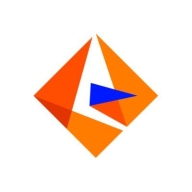Informatica Intelligent Data Management Cloud (IDMC) is a robust platform used by banks, financial institutions, and health sector organizations for data management, governance, and compliance.
IDMC provides comprehensive tools for data discovery, profiling, masking, and transformation. It supports Salesforce integration, real-time data streaming, and scalable data management solutions. Health organizations manage national product catalogs while financial entities focus on data protection and regulatory compliance. Its intuitive interface, flexible features, and robust tools make it valuable across sectors, though enhancements in data integration and human workflow are being sought.
What are the most important features?
- Data discovery: Facilitates identifying and understanding data sources.
- Data profiling: Analyzes old databases for data quality.
- Data and platform masking: Ensures data protection.
- Salesforce integration: Seamless connectivity with Salesforce.
- Mastering data: Centralizing and standardizing data.
- UI intuitiveness: User-friendly interface.
- Feature map flexibility: Adapts to user needs.
- Business glossary creation: Defines business terms.
- Data lineage: Tracks data flow and transformations.
- Automation: Streamlines data processes.
- Enterprise data cataloging: Organizes extensive data assets.
- Scalability: Supports expanding data requirements.
- Easy setup: Quick deployment process.
- Bulk upload: Efficiently handles large data volumes.
- Customizable data management: Tailors data solutions.
- Real-time data streaming: Manages live data streams.
- Integration with Hadoop and NoSQL: Connects with big data platforms.
What benefits and ROI should be considered?
- Regulatory compliance: Ensures adherence to regulations.
- Data protection: Safeguards sensitive information.
- Enhanced data quality: Improves accuracy and reliability.
- Centralized data: Consolidates data for better management.
- Process automation: Reduces manual tasks and errors.
Banks and financial institutions use IDMC for data masking, transformation, and compliance, while health sector organizations leverage it for national product catalogs. Industry applications focus on automating business processes, centralizing data, and managing data catalogs to meet regulatory demands and ensure data protection.
Oracle GoldenGate is a real-time data integration and database replication solution. It can detect data events and route them across networks at very low latencies and integrates well with 100s of combinations of non-Oracle databases, data stores, and clouds.
Oracle GoldenGate Features
Oracle GoldenGate has many valuable key features, including:
- Simple to use web interface
- Fast and easy installation or provisioning
- Command line access via AdminClient that can run anywhere
- RESTful APIs for DevOps
- Offers built-in monitoring but also can be easily adapted to roll your own monitoring
- APIs are protected by Cross Site Request Forgery (CSRF) authentication.
Oracle GoldenGate Benefits
Some of the benefits of using Oracle GoldenGate include:
- Oracle GoldenGate is deeply integrated with the Oracle Database (logging, redo, backup and recovery layer, security, administration, data guard, data vault, autonomous database etc.).
- It is the most stable, performant, and reliable CDC / replication solution for Oracle.
- High performance: Oracle GoldenGate is capable of sub-second latency for data movement. featuring low impact capture, routing, transformation, and delivery of transactional data.
- GoldenGate is the only CDC / replication tool that keeps pace with new and emerging innovations (security, features, data types, etc) in the core Oracle Database.
- The solution supports a wide range of use cases, from conventional OLTP data replication and high availability to data lake ingestion or multi-cloud ingestion, SaaS application replication, and messaging replication.
- GoldenGate is the only CDC / replication technology certified for Exadata, Exadata Cloud Service, and Exadata Cloud at Customer.
- For fault-tolerance, GoldenGate has its own mechanism to keep track of how much work is completed and how much is pending. This mechanism is independent of any database and ensures, with the help of automatic gap-resolution, that no data loss occurs.
- GoldenGate uses its own proprietary format files for keeping the committed data coming from the source database, making it independently functional irrespective of the database in use.
- To maintain the performance and consistency, only committed data is sent. Uncommitted data is captured by GoldenGate, but is discarded after receiving a Rollback.
- With GoldenGate, data sending is in “near real time,” which reduces the possibility of latency.
Reviews from Real Users
Below are some reviews and helpful feedback written by Oracle GoldenGate users.
PeerSpot user Steve-J., Cloud Migration Software Consultant - UK & EMEA at 1PLACE, says, "What I have found the most valuable about GoldenGate is that it does real-time and no-downtime migrations. Its migrations are fast. There are not many tools like it on the marketplace."
Pinak S., Senior Manager of System and Database at ESL, mentions, “We like how in GoldenGate the heterogeneous database is supported. Sometimes the client actually needs a schedule and needs to ensure the state of databases for reporting purposes. With that in mind, we have been able to configure GoldenGate for certain schema. The solution is quite stable. They've recently improved the ease of implementation.”
A Database Administrator at a manufacturing company explains, "It moves the data as you set it up, and it works. I am also very impressed with its stability and scalability. It is not super feature-rich, but the new releases have more functionality. It recently had more native integrations with Oracle Database. If you are using it against an Oracle database, it has a lot more functionality."
An Oracle ERP DBA Consultant - Oracle Super Cluster T5-8 Admin at a government comments, "GoldenGate can connect and collect data from multiple sources, such as SQL Server."
SAP NetWeaver Process Integration facilitates the integration of business processes that span different departments, organizations, or companies. SAP PI is based on general standards so as to enable 3rd-party systems to be integrated. At the center of SAP PI is an XML-based communication that uses HTTP (Hyper Text Transfer Protocol). Irrespective of the scenario used, the application-specific contents are transferred in messages in user-defined XML eXtensible Markup Language) from the sender to the receiver either via the Integration Server, or directly between the systems involved. SAP PI can be installed in different ways: Dual usage type installation: Based on both AS ABAP and AS Java. and Advanced Adapter Engine Extended (AEX): Based on AS Java only.





